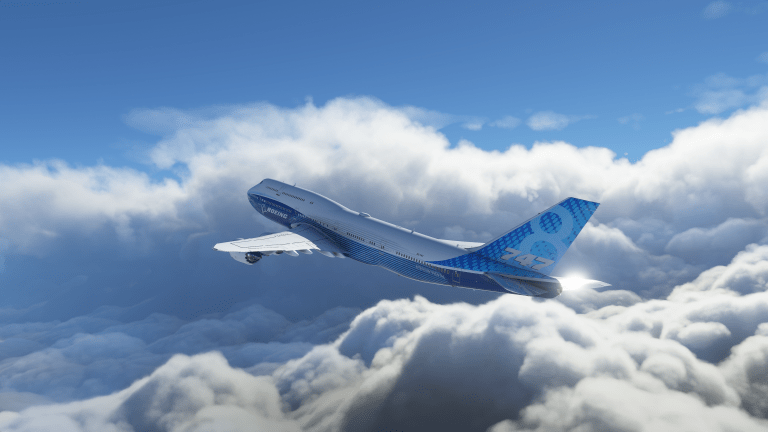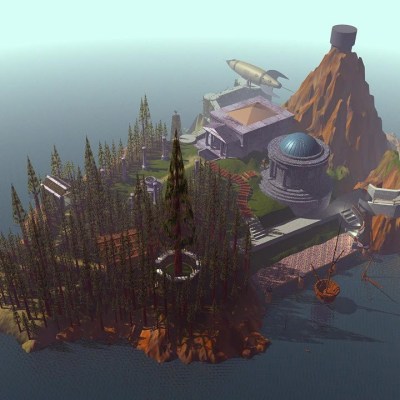Microsoft Flight Simulator Review: Around the World on a PC
Microsoft Flight Simulator is challenging but rewarding once you're soaring at 30,000 feet. Read our review.

I’m going to level with you. I review video games, and as Microsoft Flight Simulator’s title clearly indicates, it isn’t exactly a game, at least in the traditional sense. It’s a simulator that tries to get as close to the real thing as possible — and it’s a massive one, to boot. Diving into the latest iteration of Microsoft’s long-running series was a daunting endeavor to say the very least.
Fortunately, Microsoft Flight Simulator is absolutely delightful, its true-to-life approach to air travel one of the best simulations of flying ever created. But it’s also an incredibly challenging game.
The process of learning how to fly a plane is exceedingly difficult, and I can say for certain that my piloting skills are woefully inadequate at best. But flying around the planet at my leisure in the game’s free play mode is one of the most relaxing, awe-inspiring things I’ve ever done in a video game (until it’s time to land the plane that is, which is when I turn into a quivering ball of nerves).
The technology fueling Microsoft Flight Simulator is staggering. Satellite imagery, live weather data, and real-life flight patterns are fed into the game’s engine, which generates a startlingly realistic, live representation of the entire planet for you to soar over. You can visit any location on Earth, which opens up endless possibilities in terms of destination and, thanks to the live data, creates the sensation of being connected to the real world through your computer screen.
In a way, Microsoft Flight Simulator is the ultimate tourist experience. You can fly to Mount Everest, New York City, Madagascar, Tokyo…literally wherever. And while much of the in-game Earth is procedurally generated using satellite imagery, the most famous cities and landmarks are rendered with extra detail by developer Asobo’s artists, whose work ensures that when you fly by the Eiffel Tower or, through the Las Vegas Strip, or over Central Park, it looks and feels like the real deal, down to bus stops and billboards.
But even the most mundane of locales are presented with a surprising level of real-world detail. The very first thing I did (and surely the first thing most players will do) when I fired up the free flight mode was set SFO as my departure airport and head straight for my house in the Bay Area. I was honestly shocked to find my little neighborhood, the marina down the street, the tiny park I take my son to, and my house rendered in enough detail to easily recognize them from the skies. It was mind-blowing and trippy to fly over my old middle school, my neighborhood grocery store, all my friends’ houses. It’s a unique sensation that quite simply can’t be found in any other game.
The game’s representation of Earth isn’t picture-perfect, however. The satellite images are imbued with height and geometry via in-game procedural generation, and on many occasions, certain structures — like water towers, refineries, and buildings — aren’t given dimension by the game engine and end up looking textureless and flat. A lot of the geometry of the world looks bizarrely warped and wonky upon closer inspection, but hey, for what the game is aiming to do, it’s pretty astounding how true-to-life the world looks.
Aside from the visuals’ technical feats, the game just looks flat-out gorgeous at times. The world lighting is impressive, especially when sunlight hits the myriad varieties of volumetric cloud formations. You can pause the game at any time and take a look around in photo mode, adjusting weather settings and time of day to your heart’s content (you can opt to use live weather data as well). With simple sliders, you can conjure storm clouds, turn day to night, or give yourself clear skies.
I chose to fly over Christ the Redeemer in Rio de Janeiro the other day, and to see the majestic statue overlooking the mass of humanity stretched out before it, the blazing sun poking through scattered clouds all around, was exhilarating. I’m not sure of what level of art design or stylization goes into a game like this, seeing as the visuals aim specifically to emulate the real world, but the craftsmanship on display is jaw-dropping.
But it all goes back to actually being able to fly and land your plane. I couldn’t grasp how to fly all that well, even on the easiest setting (I used a mouse and keyboard setup). But I still had a good time trying to learn, and the game’s tutorial missions are well laid-out and easy to follow. The control layout also feels as close to the real thing as you can make it on a keyboard and mouse.
A lot of the gameplay revolves around getting to know the cockpit and learning to read the different gauges and instruments and applying that information to your flight, which can be overwhelmingly complex. Thankfully, the game gives you a checklist of tasks to run through that will take you from takeoff to landing. These tasks are somewhat vague and require you to learn many of the flight mechanics on your own, which can be frustrating, especially for a beginner. But achieving my first successful flight from takeoff to touchdown was fulfilling, and while it requires a lot of patience to learn the ins and outs of the game, you can always take solace in the fact that most of your flight consists of you soaring peacefully above the clouds, which is easy enough to manage.
It’s also important to familiarize yourself with the variety of planes on offer. There are four classes of aircraft—propeller planes, turboprops, jets, and airliners. All have a unique feel and require different skills to operate, which gives each plane a personality of its own. It also means you’ll quickly have some favorites. Early in the game, I learned to fly a Cessna 152, a tiny, two-seat flight-training plane. It’s pretty nimble and capable of impressive rolls and other twisty aerial maneuvers. Jumping from that plane and into the cockpit of a 747, however, is a vastly different experience—just taking off is a grand ordeal, and maneuvering the gigantic thing in the air is a far cry from twirling around in a Cessna prop plane.
The game offers live challenges and events to participate in, which gives the game a bit of longevity and helps to connect its community. There isn’t a robust amount of content here, but the experience of flying around the globe was robust enough for me.
I had a great time with Microsoft Flight Simulator. I may not have connected with it in the way that other players do, setting up flights, executing takeoffs and landings to perfection, mastering the nuances of the countless flight controls. But it was a wondrous experience to gawk at the natural beauty of our planet from the sky. Even if you’ve never played a flight sim before, I recommend giving this one a shot.


